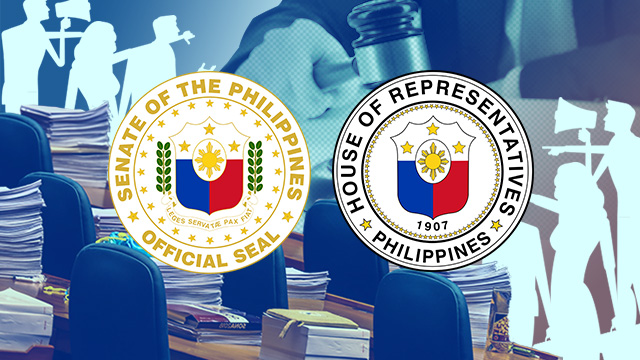In his inaugural speech as FOIC PN, VADM Giovanni Carlo J Bacordo highlighted 3 priority programs, namely: boost the capacity of the Naval Sea Systems Command; implement skills specialization for its personnel; and lastly, to modernize the mindset of every sailor and marine.[1]
In this connection, Commander Jay Tristan Tarriela PCG, in an article at the Diplomat, averred that until “institutional problems are solved, the PN will not be able to achieve its goals. . . “ He cited the so called Philippine Navy (PN) “unfinished business” of having a “separate charter” with the Marines as a “separate branch of service.[2]
He believed that a change in the military structure would mitigate the domination of the AFP by the Army and make the Navy more responsive to current and future non-conventional threats. Tarriela’s views would require a recodification of the National Defense Act (NDA) and subsequent Executive issuances such as the Administrative Act of 1987 etc. and the NDA bill as submitted since the 13th Congress.
In a rejoinder, Jessie Pascasio, a former Director of the Coast Watch program and a research consultant of the Navy, agreed with the recodification of the NDA without a ‘mad rush to legislation’ but instead more ‘strategic thinking.’ He adamantly disagreed with the suggestion that structural charter change would put a stop to favoring the Army, citing that maritime legislation were sponsored by SNDs that came from the Army.[3]
The common denominator of Tariela and Pascasio is the basic charter that provides the strategic trajectory that governs the Navy and the codification of its amendments leading to a revised structure. They seem to contend that PN could not achieve its goals sans charter change with the necessary strategic thinking underlying the change.
Certainly, PN awaits the new law as PRRD expressed in his SONA calling for support by asking Congress for legislation aimed “to strengthen defense related systems such as the National Defense Act.” CA No 1 has been overshadowed by Administration Order of 1987 etc.
But is the proposed National Defense and Security Act (NDSA) of 2004 responsive to the concerns raised above? Let us briefly see how it came about. Interestingly, as far back as the Biak na Bato Constitution, the Navy was conceived as a unit of the Army.[4]
A Navy came about in the second phase of the Revolution towards the Phil American War. A revolutionary navy was formed from 8 steam launchers captured from the Spaniards plus 5 bigger vessels donated by rich Filipinos. In 1898 a Bureau of the Navy was under the Ministry of Foreign Relations but after the Malolos Constitution the Bureau was transferred to the Ministry of War that became the Ministry of War and Navy.
As the tension between the Filipinos and Americans heightened leading to a blockade, the Navy of 13 ships was decimated. [5]
Fast forward to the Philippine Commonwealth under US, the first law Quezon proposed in 1937 was the National Defense Act aka Commonwealth Act No 1. It is to have a Phil Army composed of a citizen army of 400, 000, but by 1938 it was only an army of less than 69,000. It was vocally criticized by Vice Governor General Hayden who believed that a small fleet of motor boats and bombers can deny hostile forces our territorial waters. Camilo Osias of the National Assembly was more colorful: “In order to have an adequate national defense it must be a “defense ashore, afloat, and aloft.”[6]
The Philippine Navy appeared in the horizon in 1951 when President Quirino issued Executive Order 389 designating the Philippine Naval Patrol (PNP) that was the former Offshore Unit of the Army, as the PN. But earlier in 1950, the SND Ramon Magsaysay organized a Marine Battalion as a unit of the PNP. Internal security threats on land and an MDT with US for external threats put the PN on a supporting role to ground forces.[7]
The Administrative Code of 1987 came to pass as Executive Order 292 tasking the PN with the following mission:
The Administrative Code of 1987
ARTICLE 13 – Philippine Navy
SECTION 37. The Philippine Navy shall be composed of its headquarters, naval combat forces, service forces, the Philippine Marine Corps and such other forces as may be necessary for the conduct of naval operations. It shall be responsible for the preparation of naval forces necessary for the effective prosecution of war, except as otherwise assigned; and, in accordance with the integrated mobilization, plans, program for the expansion of the peace-time components of the navy to meet the needs of war. It shall be headed by the Flag Officer in Command, Philippine Navy (FOIC, PN) who shall hold the rank of Vice Admiral.
SECTION 38. The Philippine Navy shall:
- Organize, train, equip and deploy naval forces for prompt and sustained;
- Provide for naval defense; naval operations;
- Secure the country’s internal and territorial waters and its interest in the exclusive economic zone;
- In coordination with the cognizant agencies identified herein, develop and maintain the principal and alternate base systems, maritime links to ground lines of support, programs aimed at the prompt conversion of maritime industry sectors into peculiar naval warfare formations during mobilization, and such programs aimed at propagating among private sector individuals and groups such maritime skills which can be used for naval warfare;
- Prepare the necessary naval units for the effective execution of national defense plans and programs, and Armed Forces missions, including the expansion of a peacetime navy component to meet the needs of war;
- Develop doctrines, concepts, systems, procedures, strategies, tactics, and techniques for operations peculiar to the Navy; and g. Organize, train, equip, regularly test-mobilize and test-deploy the naval reserve component.
SECTION 39. The Philippine Marine Corps (PMC) shall be a type command of the Philippine Navy and shall be headed by the Commandant, Philippine Marine Corps, 19 V who shall hold the rank of Major General. The mission of the Corps is to provide combined arms maneuver forces to the unified commands and landing forces to Navy fleet forces for the conduct of amphibious operations and such other actions essential to the prosecution of naval defense. The Philippine Marine Corps functions are listed.[8]
It should be noted that before the 1987 Constitution that tasked the AFP to secure our territorial integrity, the UNCLOS came into being and as ratified by PH became part of the law of the land granting as maritime domains, requiring a Navy and Coast Guard especially after the termination of the extension of the US bases in 1991. In this connection, the PCG law was enacted followed by the Baselines Law of 2009.
Our maritime domain has been named by us as the West Philippine Sea imposing on us a patriotic pressure to take it seriously. What is in a name really? Vietnam just named her sea as East Sea and South Korea likewise. But Congressman Rufino Biazon filed 3 bills in defense of the Philippine Sea in the east. Congressman Rufino Biazon filed House Bill (HB) 5497 or the “Benham Rise Research and Development Institute Act” and HB 5498 or the “Eastern Seaboard Strategic Defense Plan Act” in April 2017. The two proposed measures have been pending before the House committee on government reorganization and committee on national defense and security since May last year.
HB 5497 seeks to establish a government agency that would take charge of the research, development, exploration, conservation and biodiversity concerns of the Benham Rise region. Under HB 5497, the proposed Benham Rise Research and Development Institute would be under the Department of Science and Technology.
“The said Institute shall likewise be allowed to seek and accept foreign grants to further advance its programs and operations. Accordingly, the Institute shall also have the authority to partner with foreign parties also interested in the exploration of the region,” the proposed measure read.
HB 5498, meanwhile, tasks the Department of National Defense and government security agencies to come up with a strategic plan to enhance defense capabilities in the country’s eastern seaboard.

Congressman Rufino Biazon
On July 2017, Congressman Rufino Biazon filed a third bill which seeks to declare Benham Rise a protected area under the Republic Act 7586 or the National Integrated Protected Areas System Act. Under the proposed measure, it would be the policy of the state to promote the Benham Rise or Philippine Rise region to spread awareness and concern.[9]
HB 6036 or the “Philippine Rise Natural Park Act of 2017” has been pending with the House Committee on Natural Resources since July last year.

Senator Rodolfo Biazon
The National Defense and Security Act was first introduced in the 13th Congress by Congressman Rufino Biazon and Senator Rodolfo Biazon, respectively.
For the 18th Congress, Congressman Rufino Biazon refiled the bill numbered HB 0550.
ARTICLE 13 – Philippine Navy
SECTION 38. The Philippine Navy shall:
- Organize, train, equip and deploy naval forces for prompt and sustained;
- Provide for naval defense; naval operations;
- Secure the country’s internal and territorial waters and its interest in the exclusive economic zone;
- In coordination with the cognizant agencies identified herein, develop and maintain the principal and alternate base systems, maritime links to ground lines of support, programs aimed at the prompt conversion of maritime industry sectors into peculiar naval warfare formations during mobilization, and such programs aimed at propagating among private sector individuals and groups such maritime skills which can be used for naval warfare;
- Prepare the necessary naval units for the effective execution of national defense plans and programs and Armed Forces missions, including the expansion of a peacetime navy component to meet the needs of war;
- Develop doctrines, concepts, systems, procedures, strategies, tactics, and techniques for operations peculiar to the Navy; and g. Organize, train, equip, regularly test-mobilize and test-deploy the naval reserve component.
SECTION 39. The Philippine Marine Corps (PMC) shall be a type command of the Philippine Navy and shall be headed by the Commandant, Philippine Marine Corps, 19 V who shall hold the rank of Major General. The mission of the Corps is to provide combined arms maneuver forces to the unified commands and landing forces to Navy fleet forces for the conduct of amphibious operations and such other actions essential to the prosecution of naval defense. The Philippine Marine Corps shall have the following functions:
- Organize, train, equip and maintain units of combined arms for amphibious operations, ground combat operations and internal security operations, and provide coastal artillery defense and early warning and surveillance of maritime corridors and choke points;
- Develop in coordination with other services the doctrines, tactics, techniques and equipment employed by landing forces during amphibious operations;
- Maintain deployable forces-in-readiness up to division size; type command rear service support units and the core formations of the Marine ready reserve forces;
- Participate in national socio-economic development and assist in times of calamities and disasters;
- Perform such other duties as may be directed by higher authorities.[10}
In the 18th Congress, Senator Panfilo Lacson also introduced a bill numbered SB 249.
Section 45. The Philippine Navy. The Philippine Navy (PN) headed by the Chief of the Philippine Navy, shall provide forces that shall be employed for the conduct of prompt and sustained naval operations in support of the AFP missions. It shall be composed of its headquarters, naval forces, service support and sustainment units and such other units as may be necessary for the conduct of naval operations.
Section 46. Functions of the Philippine Navy.
The Philippine Navy shall:
- Develop, organize, train, equip, maintain, and sustain such naval forces or units as may be necessary for the conduct of prompt and sustained operations;
- Prepare such forces or units as may be necessary for the effective implementation of the national defense plans and programs and armed forces missions;
- Formulate and develop, in coordination with the other Component Services, doctrines, systems, tactics, techniques and procedures peculiar to the Navy;
- Implement mobilization of the Navy Reserve; and
- Perform such other functions and duties as may be provided by law or assigned by the CSAFP.[10]
Concluding Statement
My interest in National Defense and security concerns is a result of being a researcher of my father, Commodore Plaridel C Garcia, a retired Navy officer, and we spent time together as consultants to Senator Rodolfo G Biazon, the long-time chair of the National Defense and Security Committee. I became familiar with CA Act No 1 and many of the subsequent Executive issuances and laws such as the AFP Modernization Act, PCG and Baselines laws etc. In my considered opinion, I would have wished that the NDA was passed when first introduced, but like the AFP Modernization act, certain events lead to its standstill like economic shocks, all-out wars, further internal security intensifications, even with the potential threat of China.
Now, the socio-political and the geopolitical environment also changed with the Pandemic and the continuous rise of China leading to the Indo Pacific construct, and lastly, the downturn of the economy as a result but I believe that it was a blessing in disguise that the NSDA bill was not certified urgent by all Presidents from Arroyo to Duterte.
In the first place it was mostly a recodification of CA No 1 and subsequent laws.
Second, the geo-strategic situation has been altered by the pandemic.
Third, the consequential downturn of the economy put a pressure to evaluate structures and compositions such as a citizen AFP with lesser present and future personnel costs, and conventional equipment that are very expensive may have to be replaced. Thus, the observations of Taruela and Pascasio were not in vain. The need for strategic thinking leading to PN as the premier Service and restructuring into what the economy can bear. Because this administration is about to run its course, perhaps, it is time again to sit back and think things over, but it is highly recommended for the president to consider the legislative bill as urgent.
Having stated the above, for as long as internal security threats are considered the priority, the Philippine Navy unfortunately has to fall in line. And as a consequence, external threats are not able to be addressed in a timely manner.
Endnotes
- https://cnnphilippines.com/news/2020/2/3/giovanni-bacordo-philippine-navy-chief.html
- https://thediplomat.com/2020/09/why-the-philippines-needs-to-revise-its-national-defense-act/
- https://www.rappler.com/voices/imho/opinion-national-defense-act-we-need-strategic-thinking-not-mad-rush-legislation
- http://web.archive.org/web/20080711191030/https://thecorpusjuris.com/laws/constitutions/8-philippineconstitutions/300-1897-biac-na-bato-constitution.html
- https://web.archive.org/web/20100217101436/http://www.navy.mil.ph/history.htm
- https://www.chanrobles.com/administrativecodeofthephilippinesfulltext.html
- https://www.philstar.com/headlines/2018/01/29/1782514/benham-rise-bills-pending-house
- https://www.congress.gov.ph/legisdocs/basic_18/HB00550.pdf
- http://legacy.senate.gov.ph/lisdata/3051327388!.pdf
